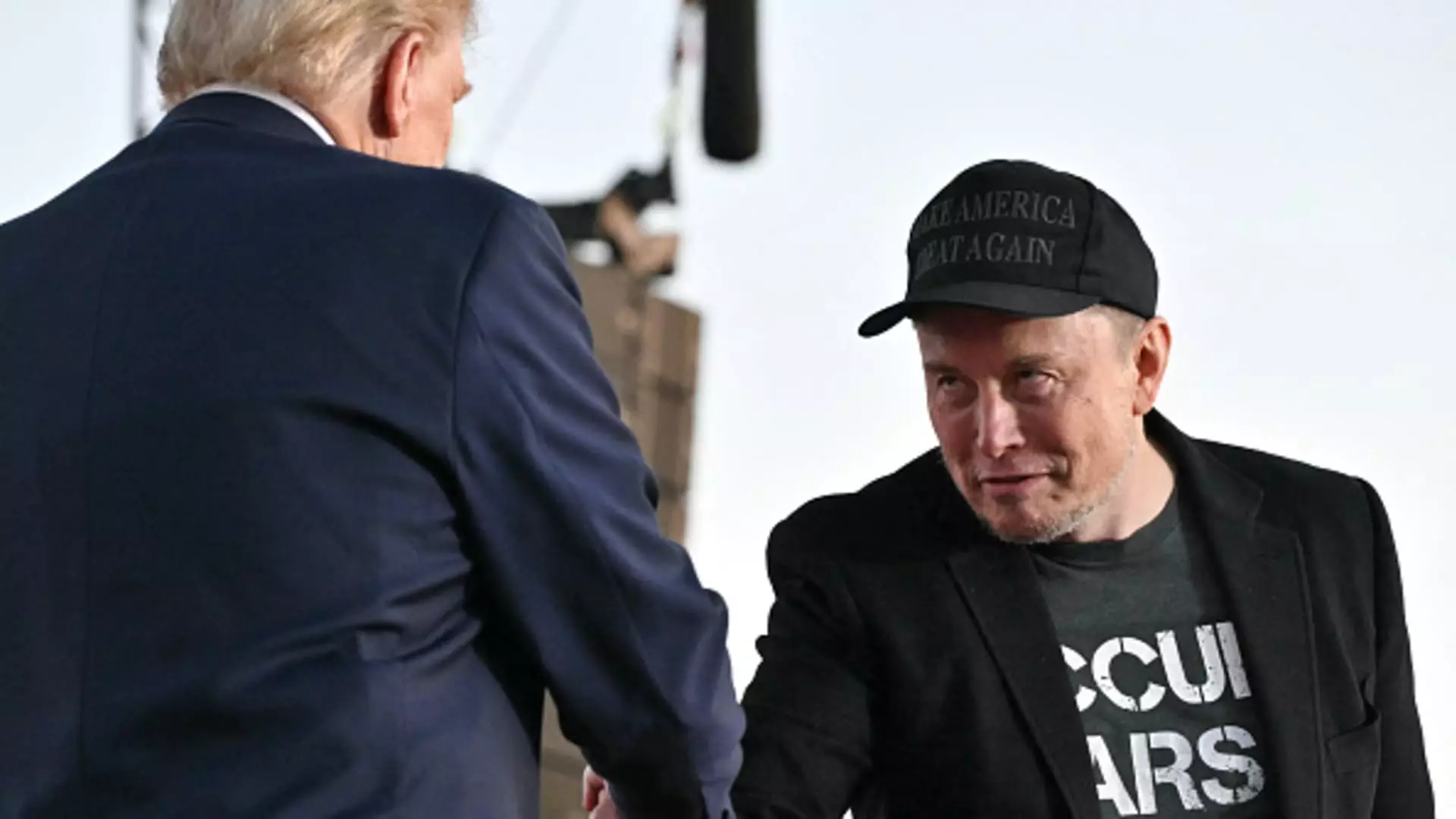The intersection of technology and government policy has always been a focal point of discussion, particularly in innovative sectors like autonomous vehicles. Recently, discussions around federal frameworks for regulating self-driving cars gained significant attention, particularly in the context of Tesla’s stock performance and its relationship with the incoming presidential administration. The potential for regulation in this area is not merely a question of policies but also one that has far-reaching implications for the automotive industry and the economy at large.
On a seemingly ordinary Monday, Tesla’s shares spiked by nearly 8% in premarket trading after a report indicated that the incoming Trump administration is prioritizing a federal framework for autonomous vehicle regulation. This news reflects investor sentiment and the current landscape of electric and autonomous vehicles in the U.S. economy. Shareholders are keenly aware that regulatory clarity could provide significant advantages to companies like Tesla that are investing heavily in self-driving technologies. However, this spike in stock value also raises questions about the sustainability of such gains solely based on anticipated governmental support.
The report in question, sourced from Bloomberg and not independently verified by other media outlets, pointed toward a larger objective: establishing a comprehensive regulatory environment for self-driving vehicles under the U.S. Department of Transportation. Investors are certainly hopeful that a favorable regulatory climate could expedite Tesla’s ambitions, which have so far fallen short of delivering fully autonomous vehicles. Nonetheless, putting too much stock—both literally and figuratively—in unforeseen regulatory changes could be a risky strategy.
Elon Musk’s relationship with Donald Trump is not new, nor is it purely transactional. Musk has previously positioned himself as a key player in advocating for policies that favor innovation and deregulation within the automotive sector. With the previous administration, Musk supported Trump in significant ways, and he now stands to gain from the transition team’s apparent interest in autonomous vehicle regulation. The implications of this rapport raise the question of whether such relationships can significantly influence corporate policy and regulatory development.
The formation of a new governmental body, known humorously as the Department of Government Efficiency (DOGE), underlines a philosophy of reducing bureaucratic red tape. This ambitious agenda aims to make government more agile, which is likely to excite forward-thinking tech leaders eager to push the envelope without excessive regulatory constraints. However, skepticism remains regarding the actual capability of such initiatives to deliver promised outcomes—efficiency in government processes can prove elusive, and the effectiveness of the new department remains to be seen.
The Road Ahead for Autonomous Vehicle Technology
Tesla has always been at the forefront of the electric vehicle revolution, and its push for autonomous driving technology, exemplified in the development of the “Cybercab,” indicates that the company is not simply chasing innovation but is strategically positioning itself to lead in the autonomous vehicle market. Musk’s ambitious plans for a fully autonomous fleet of robotaxis symbolize a transformative vision for both Tesla and the wider transportation landscape.
Yet, despite the excitement surrounding innovative features like the Cybercab, which lacks traditional controls such as steering wheels and pedals, competition remains fierce. Google’s Waymo has already set a precedent with successful self-driving car deployments, demonstrating that Tesla is not the only player in this space. Moreover, while Tesla’s Full Self-Driving (FSD) technology has made progress, the imperative for human supervision remains a barrier that the company has yet to surmount.
The Need for Responsible Regulation
As discussions surrounding regulatory frameworks for self-driving vehicles advance, it is crucial to consider the balance of promoting innovation while ensuring public safety. The introduction of new policies must come with an understanding of the technical and ethical complexities of autonomous technology. A robust, thoughtful, and inclusive regulatory approach will not only protect consumers but will also foster an environment where companies can compete fairly, ultimately benefiting society as a whole.
The evolving narrative of Tesla, the Trump administration, and the future of self-driving vehicles reveals an intricate dance between innovation, market pressures, and the essential role of government regulation. With the stakes continually rising, industry stakeholders must remain vigilant and proactive in their quest for a transformative transportation future.


Leave a Reply